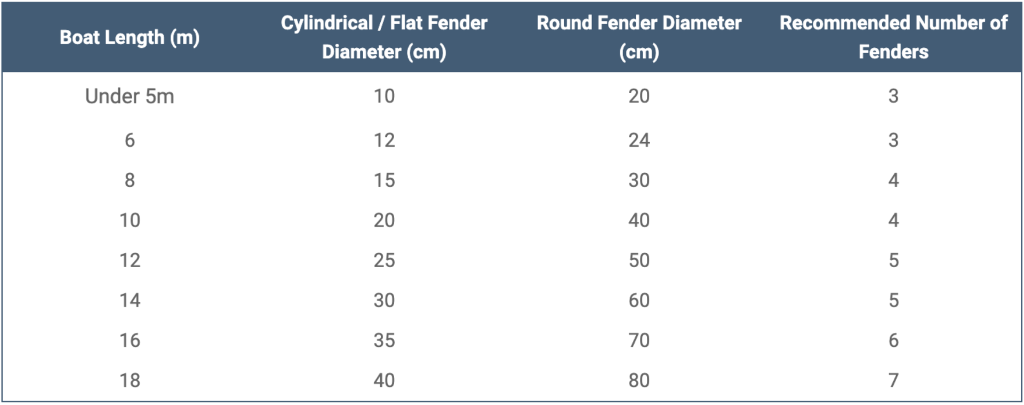Pare-battages
Les défenses pour bateaux sont de grandes vessies remplies d'air, très résistantes, qui servent à protéger votre bateau contre les dommages causés par d'autres bateaux, un poste d'amarrage ou un quai. En savoir plus...
The bigger the boat, more fenders are needed to protect it. With limited storage space onboard and the need for protection one always has to compromise choosing the fenders. The convenience of inflatable boat fenders, made from reinforced, abrasion-resistant material have become the choice for larger boat owners. These lightweight and easily inflatable fenders can be effortlessly stored in the lockers when not in use.
How many boat fenders do I need?
For choosing how many boat fenders you need for your boat there are three important variables to consider: boat length, boat weight and mooring conditions. We recommend that all boats carry a minimum of 3 fenders, and at least one fender for every 10 feet of waterline length. Therefore, a 20ft boat should have 3 boat fenders and a 40ft boat should have 4 fenders, as a minimum.
What size of boat fender do I need?
The rule of thumb is that a cylindrical boat fender should have approx. 3 cm of diameter for every 1.5 metres of boat length. A round boat fender should have approx. 6cm of diameter for every 1.5 metres of boat length. The following table is a very general guideline, based on a medium displacement monohull:

What are the advantages of inflatable boat fenders?
Inflatable boat fenders offer a blend of strength and convenience. With a weight roughly half that of traditional rubber fenders, they provide sturdy protection without added bulk. Their compact storage size, coupled with quick and easy inflation, introduces a practical dimension to your sailing experience. Especially favoured by offshore sailors prioritising onboard space, inflatable boat fenders emerge as a space-efficient solution without compromising durability. Inflatable boat fenders become a sensible choice for those seeking performance, delivering reliable protection without unnecessary weight or storage concerns.
What are the advantages of flat boat fenders?
Flat boat fenders, with their square shape, prevent sliding or rolling. Similar to cylindrical fenders, they can be hung from the hull in either a horizontal or vertical position.
Flat fenders, highly favoured by racing sailors, offer exceptional advantages. Remarkably lightweight they often weigh a third of the weight of cylindrical fenders. This demonstrates their popularity within the racing community – less kilos onboard! Their stability and secure fit on the hull during mooring provide excellent protection. Additionally, these versatile fenders can double up as a mattress or cushion, serving multiple purposes for racing sailors seeking practical solutions.
Round or cylindrical boat fender – which one to choose?
Each boat fender type serves a specific purpose. Cylindrical fenders, the most common shape, can be positioned vertically or horizontally on your boat's hull, offering effective protection during mooring. Round boat fenders, also known as Ball or Spherical fenders, provide excellent point-of-impact protection and are ideal for navigating in tight spaces.
The size of the boat fender matters, and our general guideline suggests a cylindrical fender with approximately 3 cm of diameter for every 1.5 meters of boat length, and a round fender with about 6 cm of diameter for the same boat length.
Choosing between round and cylindrical boat fenders depends on your boat's specific needs. Round fenders excel at bow or stern placement when the distance to the dock is greater, providing optimal protection. Meanwhile, cylindrical fenders are the go-to choice for most boats, being the primary and most common fender shape for easier storage. Typically, 3-5 cylindrical fenders are employed for the primary contact between the boat and the dock, with the quantity determined by the boat's size. Larger boats may also incorporate 2 round fenders, serving as floating fenders during maneuvers or strategically positioned at the bow and stern for enhanced protection.

To install this Web App in your iPhone/iPad press
![]() and then Add to Home Screen.
and then Add to Home Screen.
